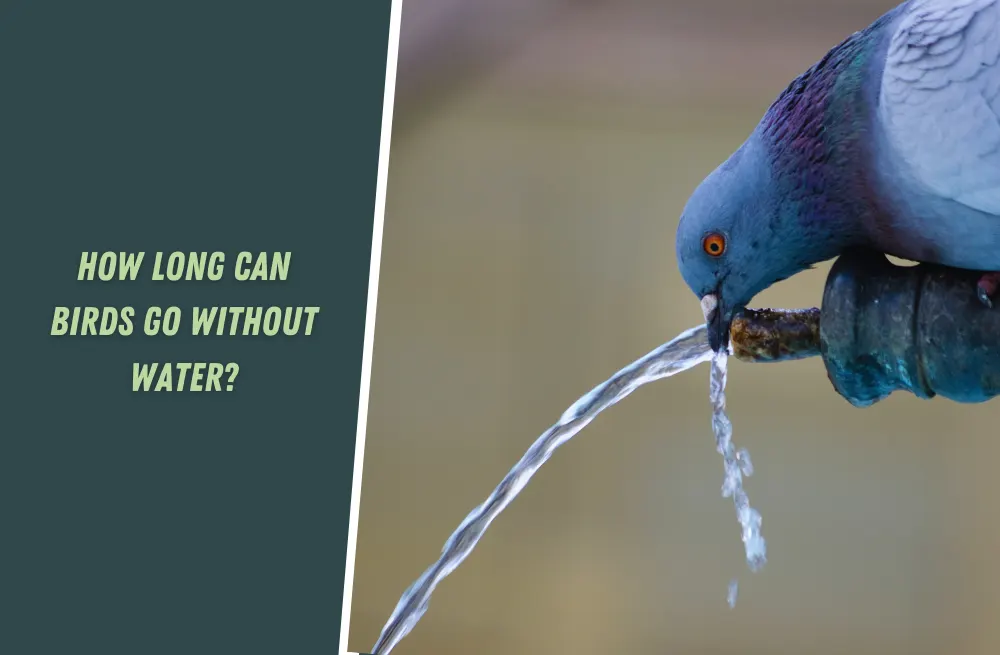Did you know that a rhino’s horn is made of the same material as our hair and nails? Despite this, rhino horns are highly valued in some cultures for their supposed medicinal properties, leading to a tragic increase in illegal poaching and the decline of rhino populations around the world.
In this article, we’ll explore the fascinating topic of why rhinos have horns and what their horns are used for. We’ll discuss the evolutionary history and ecological significance of rhino horns, as well as the current challenges and opportunities of conserving these magnificent animals.
Specifically, we’ll cover the following points:
- What are rhino horns and how do they differ from other animal appendages?
- Why do rhinos have horns, and what benefits do they provide for rhino survival and reproduction?
- How do rhinos use their horns in different contexts, and what are the mechanics and physics behind their horn use?
- What are the human impacts on rhinos and their horns, and how can we balance the conservation and welfare of rhinos with the interests and values of humans?
So whether you’re a wildlife enthusiast, a conservationist, or simply curious about the natural world, this blog post is for you. Let’s dive into the world of rhino horns and discover the wonders and challenges of these iconic features.
What are rhino horns?
Rhino horns are unique structures found on the nose of rhinoceroses. They are made of keratin, a protein found in hair, nails, and hooves, and can grow up to 1.5 meters (5 feet) in length and weigh as much as 5 kilograms (11 pounds).
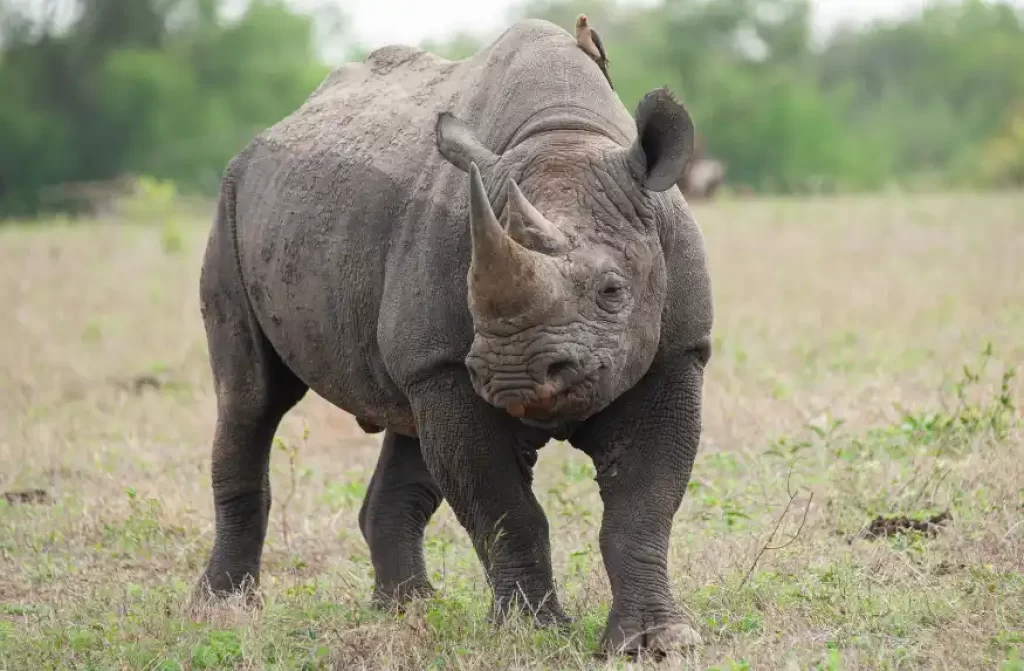
Rhino horns have a conical shape, with a pointed end and a wider base that attaches to the rhino’s skull. The surface of the horn is often rough and ridged, with a dull or glossy finish depending on the species.
Horns differ from other animal appendages, such as antlers and tusks, in several ways. Antlers are bony structures that are shed and regrown every year by deer, elk, and other members of the deer family. They are used primarily for male-male competition during mating season and have a branched, symmetrical structure.
Tusks, on the other hand, are elongated teeth found in animals such as elephants, walruses, and narwhals. They are used for defense, foraging, and social interactions and grow continuously throughout the animal’s life.
Rhino horns, by contrast, are not used for foraging or eating, nor are they shed or regrown like antlers. Instead, they are primarily used for defense against predators and other rhinos, as well as for social communication and status display.
Additionally, unlike tusks, which are usually solitary structures, rhinos may have one or two horns, depending on the species.
Some species, such as the Indian and Javan rhinos, have a single horn, while others, such as the white, black, and Sumatran rhinos, have two horns, with the larger front horn being the most prominent.
Fact: Rhino horns can grow up to 1.5 meters (5 feet) in length and weigh as much as 5 kilograms (11 pounds).
Why do rhinos have horns?
Rhinos have evolved horns as a result of natural selection. Through millions of years of evolution, rhinos with larger, stronger, or more effective horns were better able to survive and reproduce in their environments, passing on their advantageous traits to their offspring.
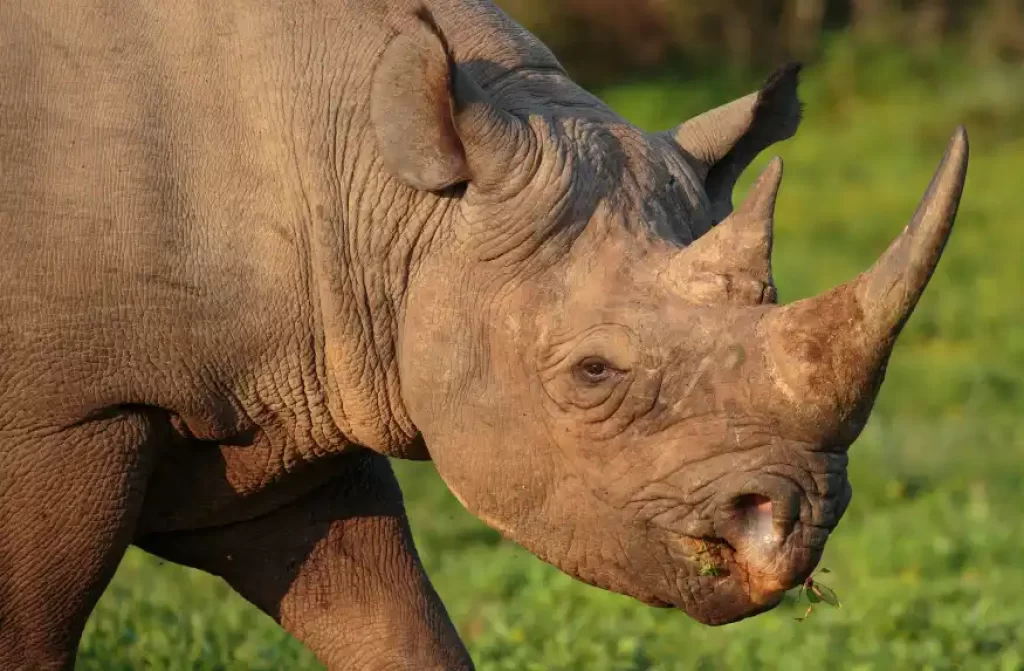
Over time, this process led to the development of the impressive horns we see in modern rhino species today.
The benefits of having horns for rhino survival and reproduction are numerous. For one, horns provide a means of defense against predators such as lions, hyenas, and crocodiles.
When threatened, rhinos may use their horns to charge at or gore their attackers, effectively warding them off or injuring them. In addition, horns can be used to assert dominance and compete for mates within rhino populations.
Male rhinos with larger or more impressive horns may have a greater chance of mating with females, passing on their genes and increasing their reproductive success.
Horns also play a crucial role in communication and social interaction among rhinos. For example, rhinos may use their horns to mark their territories or scent-marking areas, which can help to establish their dominance and deter potential rivals.
Additionally, rhinos may use their horns to signal their intentions or emotions to other rhinos, such as when they are feeling aggressive, playful, or submissive.
The absence of horns in other ungulates or mammals can be attributed to a variety of factors, including differences in ecological niche, social structure, and evolutionary history.
For example, deer and elk have evolved antlers primarily for male-male competition during mating season, as they are more efficient weapons for wrestling and fighting than horns.
Similarly, elephants and hippopotamuses have evolved tusks for defense and foraging, as their diets and lifestyles require more specialized adaptations than those of rhinos.
Nonetheless, rhino horns remain one of the most impressive and unique features of the animal kingdom, and a testament to the power and complexity of natural selection.
How do rhinos use their horns?
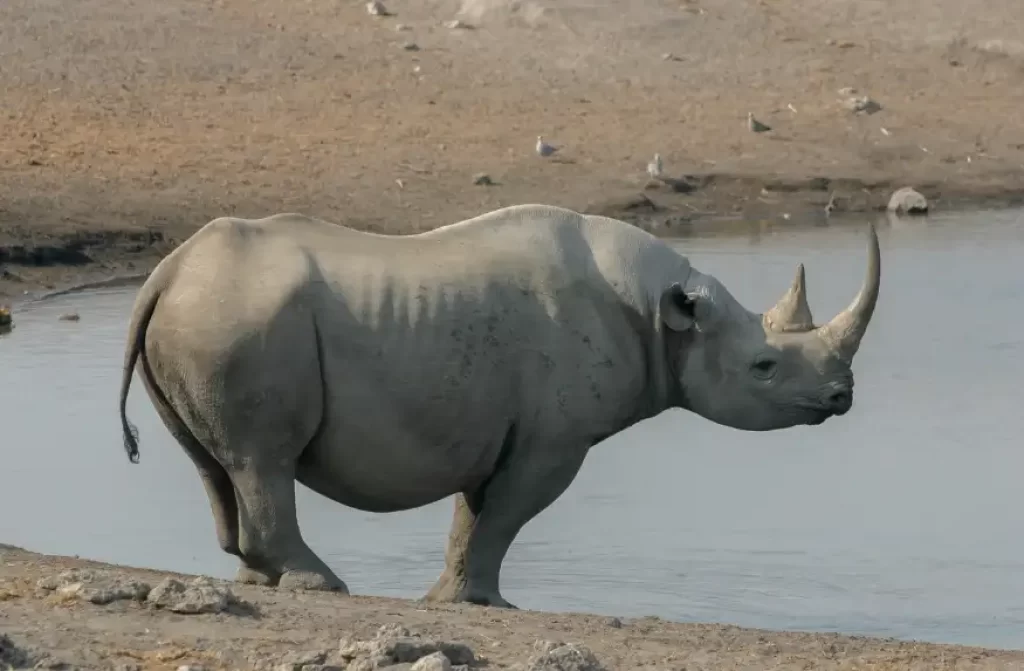
Rhinos use their horns in a variety of ways, depending on the context and the species. For example, some rhinos use their horns for territorial marking, scraping or rubbing them against trees, rocks, or the ground to leave scent marks and communicate their presence to other rhinos. Other rhinos may use their horns for grooming, scratching hard-to-reach areas of their bodies, or removing parasites and dirt from their skin.
However, the most well-known use of rhino horns is for defense and fighting. When threatened or provoked, rhinos may use their horns to charge at or gore their attackers, either to intimidate them or to injure them.
The force, speed, and accuracy of a rhino charge are impressive, with some estimates suggesting that a rhino can reach speeds of up to 50 km/h (31 mph) and deliver a force of up to 2,000 kg (4,400 lb) in a single blow.
This makes rhinos one of the most formidable and dangerous animals in the world, and highlights the importance of avoiding or respecting them in the wild.
Using their horns for fighting or defense, however, also comes at a cost. Rhinos may risk injuring themselves or expending valuable energy when charging or fighting, which can be detrimental to their health and survival.
In addition, using horns for dominance or competition may also lead to social conflicts and aggression among rhinos, which can disrupt their social dynamics and threaten their populations.
Despite these risks, rhino horns remain an essential part of their natural history and ecology, and a testament to the power and ingenuity of nature’s designs.
You might also like: Buffalo vs Rhino: Who Would Win in a Battle?
How did rhinos get their horns?
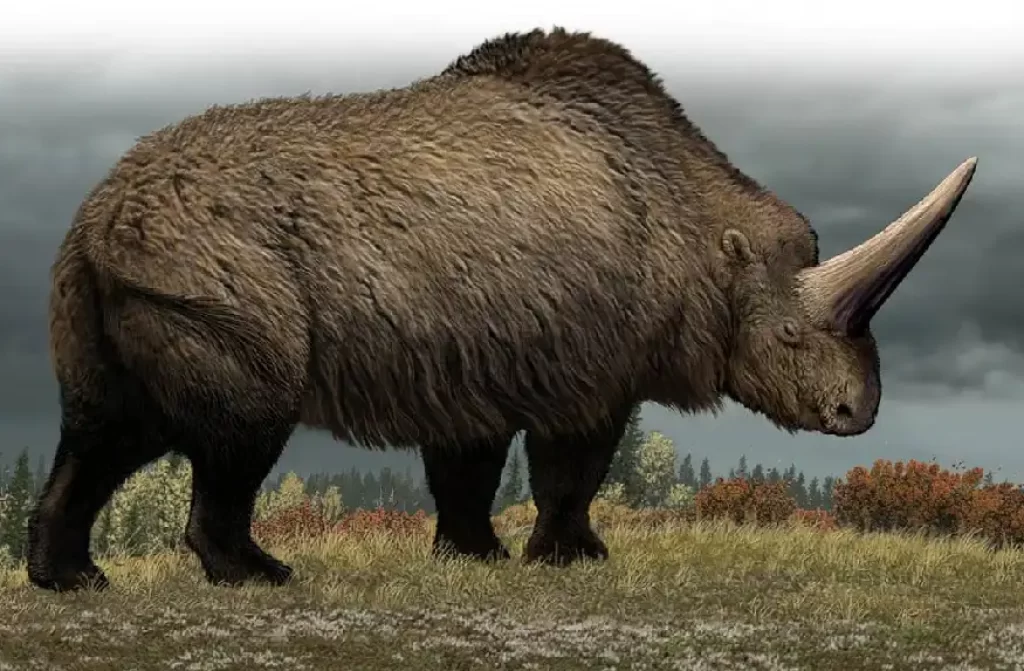
The origin and evolution of rhino horns is a complex and fascinating topic that scientists are still exploring. According to current knowledge, rhino horns are actually modified structures of the skin and hair, rather than bone or ivory. Specifically, rhino horns are composed of keratin, a protein that also forms nails, hooves, and feathers in other animals.
The exact reason why rhinos evolved horns is still debated, but researchers suggest that it may have served multiple functions throughout their evolutionary history.
One hypothesis is that rhino horns evolved as a defensive adaptation against predators or competitors, allowing rhinos to fight or intimidate rivals or to break through vegetation.
Another possibility is that rhino horns evolved as a signal of fitness or health, helping rhinos to attract mates or establish dominance in social hierarchies.
Interestingly, not all rhino species have horns, and some have different shapes and sizes of horns. For example, Indian and Javan rhinos have a single horn, while white, black, and Sumatran rhinos have two horns. The size and shape of the horns also vary, with some horns reaching up to 5 feet in length.
The average horn sizes by species of rhino
| Species | Horns | Average Length (cm) | Average Weight (kg) | Average Weight (lbs) |
|---|---|---|---|---|
| White Rhino | 2 | 81-127 | 5-8 | 11-18 |
| Black Rhino | 2 | 50-140 | 1-3 | 2.2-6.6 |
| Indian Rhino | 1 | 20-57 | 3-6 | 6.6-13.2 |
| Javan Rhino | 1 | 25-57 | 2-3 | 4.4-6.6 |
| Sumatran Rhino | 2 | 10-80 | 0.5-2 | 1.1-4.4 |
White Rhino:
The white rhino has the largest horns of any rhino species, with the front horn measuring around 60-150 cm (24-60 inches) and the smaller second horn measuring around 30-50 cm (12-20 inches).
Black Rhino:
The black rhino has two horns that are made of compacted keratin fibers. The front horn can reach up to 50-140 cm (20-55 inches) in length, while the second horn is much smaller, usually around 2-55 cm (1-22 inches).
Indian Rhino:
The Indian rhino has a single horn that is usually around 20-100 cm (8-39 inches) long.
Javan Rhino:
Like the Indian rhino, the Javan rhino also has a single horn that is usually shorter, measuring around 15-25 cm (6-10 inches) in length.
Sumatran Rhino:
The Sumatran rhino has two horns that are usually no more than 25 cm (10 inches) long, making them the smallest of any rhino species.
Can a rhino survive without its horn?
Yes, a rhino can survive without its horn. Rhinos use their horns primarily for defense and for competing with other males for access to females. However, if a rhino loses its horn, it can still survive as long as it is able to avoid predators and find sufficient food and water.
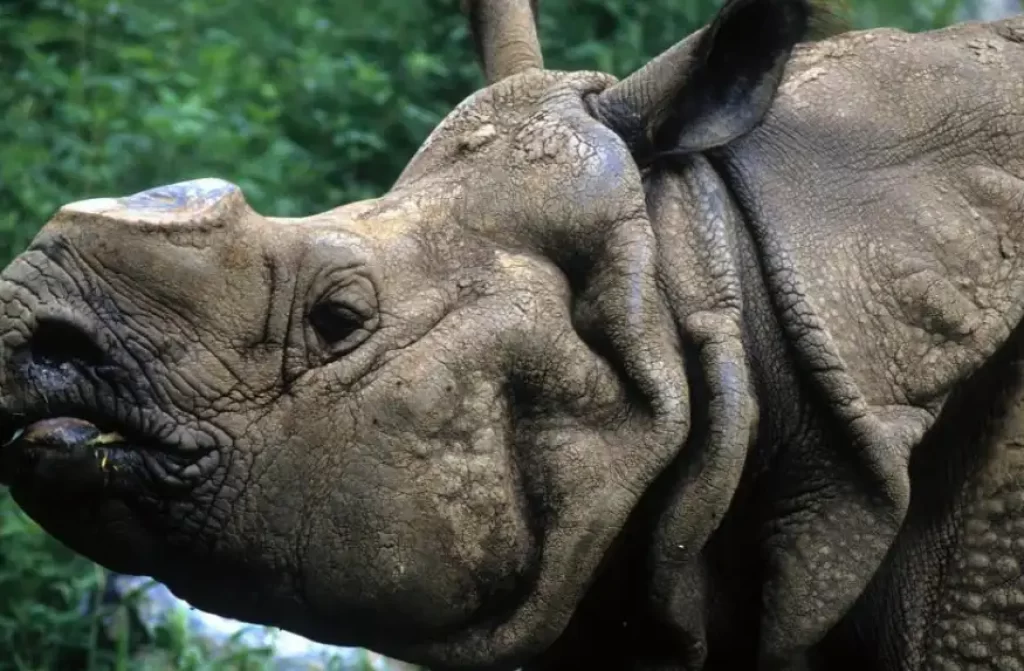
In fact, some conservationists have intentionally removed the horns of rhinos in order to protect them from poaching. Removing a rhino’s horn can make it less of a target for poachers who are primarily interested in the valuable ivory that the horn contains.
While removing a rhino’s horn can be risky and may cause the animal some pain and stress, it is generally considered to be a safer alternative to allowing the rhino to be poached and killed for its horn.
You might also like: Bison vs Rhino: Can a bison defeat a rhino?
What are the challenges and opportunities of rhino horns today?
Despite their ecological importance and natural beauty, rhinos and their horns face many challenges and opportunities in the modern world.
One of the biggest threats to rhinos and their horns is poaching, which involves the illegal killing and trading of rhinos for their horns, which are highly prized in some cultures for their supposed medicinal, cultural, or status value.
Poaching has caused a significant decline in rhino populations, especially in Africa and Asia, where some species are critically endangered.
Another challenge for rhinos and their horns is habitat loss and fragmentation, which results from human activities such as agriculture, urbanization, or mining.
As rhinos require large, undisturbed areas of grasslands, forests, or wetlands to survive and reproduce, the loss of their habitats can lead to population declines, genetic isolation, and other ecological impacts.
However, there are also some opportunities and successes in the conservation and management of rhinos and their horns.
For example, many organizations and governments have implemented anti-poaching measures, such as armed patrols, surveillance technologies, or education programs, to deter and punish poachers and traders. In addition, some countries have legalized the trade of rhino horns, arguing that a regulated market can reduce poaching and fund conservation efforts.
However, this is a controversial and complex issue, as some conservationists and activists oppose any form of trade or use of rhino horns, while others support alternative approaches such as dehorning, translocation, or reintroduction.
The challenges and opportunities of rhino horns today reflect the broader dilemmas and trade-offs of conservation and sustainability in the Anthropocene.
On one hand, rhinos and their horns represent a unique and valuable part of our natural heritage, and their protection and restoration can contribute to the health and diversity of ecosystems and societies.
On the other hand, rhinos and their horns are also embedded in complex social, cultural, and economic systems that may not always align with conservation goals or values.
To address these challenges and opportunities, we need to engage in interdisciplinary and cross-cultural dialogues, informed by scientific evidence, ethical principles, and democratic processes, and aimed at finding innovative and equitable solutions for rhinos and humans alike.
In conclusion
Rhino horns are fascinating structures that have evolved over millions of years to serve multiple functions in the lives of rhinos. These include defense, communication, and competition, among others. While rhinos and their horns face numerous challenges today, including poaching and habitat loss, there are also many conservation efforts underway to protect them and their habitats.
By understanding the biology and ecology of rhinos and their horns, we can work towards a more sustainable and equitable future for these incredible animals.
If you are interested in learning more about rhinos and their horns, there are many books and resources available, including “The Rhino with Glue-on Shoes” by Lucy H. Spelman and “The Last Rhinos” by Lawrence Anthony. The audio book Saving the Last Rhinos: The Life of a Frontline Conservationist, and The Last Rhino: An African Wildlife Adventure by David Mark Quigley.
We encourage you to share your thoughts, questions, or actions related to the topic in the comments below. Together, we can work towards a world where rhinos and their horns are valued and protected.






